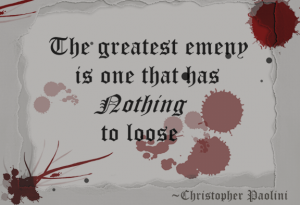Gabriela Calabretta November 24th, 2017
CDMG 1111-D306
Final Draft
JPMorgan Chase Bank
The history of Chase Bank’s logo dates back all the way to September 1st, 1799 when they first started off as Bank of the Manhattan Company. They later merged with Chase National Bank of the City of New York (est. 1877) to become Chase Manhattan Bank in 1995, and during that same year, Chase Manhattan Bank was merged with Chemical Bank (est.1991), still keeping to their original name of Chase Manhattan Bank. While the bank’s name has gone through so many changes, the logo for this bank has gone through few, from lettering and an image of the United States, to the hexagonal shape we know today.
Chase Bank was originally founded by Aaron Burr on September 1st, 1799. During its founding though, it was originally called The Manhattan Company, and was a way to bring clean water into Manhattan during the time of the yellow fever outbreak. This business was also a front, for Burr was creating New York’s second bank, competing against Alexander Hamilton’s Bank of New York. While competing, other banks began to emerge in the New York area, The Manhattan Company began to merge with other banks. The name “Chase” had come from merging with Chase National Bank which was named after former United States Treasury Secretary and Chief Justice Salmon P. Chase even though he had no connections to the bank whatsoever. Chase National Bank had merged with countless smaller banks during the 1920’s. This continued into the 1930’s where they merged with one of Rockefeller’s trust companies, successfully making Chase National Banks one of the largest in the country and the world.
Throughout the various changes and merges, the bank we know of today as JPMorgan Chase & Co. their logo has gone through very few changes. On the left we have one of the company’s first logos used from 1954 through to 1960. There is not much information on who made this, how much it originally was to make this, and when it was made, only that this image is not intended to be used for free by any other company and is to only be used to identify the company. The logo was later on changed again, this time using the well-known hexagon. The idea for the hexagon came from three designers known as Ivan Chermayeff, Tom Geismar and Sagi Haviv in 1961. They wanted something modern that still payed homage to the banks origins. The original idea for the logo was to use a symbol rather than initials so the logo would stay recognizable while the company evolves. The hexagonal shape comes from the wooden pipes used when the company was used for bringing clean water into Manhattan. On the left is one early use of the logo, made in 1962. With this imagery, they worked it into a modern-day symbol that would be able to be recognized worldwide.
The hexagonal icon is one of few banking icons that is easily recognizeable by both our nation and citizens worldwide. While J.P Morgan Bank had gone through various name changes and merging’s, the logo itself has gone through very few changes, most notable being the color changes and the different designs used for variety of personal and business related banking. From a water company front to one of the nations, and world’s largest banks, J.P. Morgan Chase has been iconic, long standing and one of today’s symbol of today’s modern banking.
Bibliography
“Chase Bank.” Wikipedia, Wikimedia Foundation, 26 Nov. 2017, en.wikipedia.org/wiki/Chase_Bank.
Chase Alumni Association, www.chasealum.org/article.html?aid=175.
Chermayeff & Geismar & Haviv, www.cghnyc.com/identities/chase-bank/.
“Chermayeff & Geismar & Haviv.” Wikipedia, Wikimedia Foundation, 6 Nov. 2017, en.wikipedia.org/wiki/Chermayeff_%26_Geismar_%26_Haviv.
“Chase Bank – Credit Card, Mortgage, Auto, Banking Services.” Chase Bank – Credit Card, Mortgage, Auto, Banking Services, www.chase.com/.






